Current exhibition
Overview
In 2012 Eva Marklund installed the sculpture Snökontinenter/Summits Of Snow at the bus station in the Hospital of Umeå. The scultpure represents the snow and ice cover of the highest mountain in each continent, as well as the Sweden’s highest peak, Kebnekaise. In the 10 year anniversary of the sculpture, Eva in collaboration with Gerard Rocher Ros, a physical geographer and researcher at SLU, have modified the 8 sculptures to illustrate the future glacier loss in each of those mountains. Gerard has quantified the glacier loss using published estimates from IPCC (Intergovernmental Panel on Climate Change), and Eva has integrated artistically those estimates in the existing sculptures. In each mountain, we represent the expected glacier extent under three different emission scenarios from IPCC, which provides a visual and impacting idea of the global effects of climate warming. With this, we not only want to convey the seriousness of climate change, but also how we as a society can change the outcome and take measures to avoid the worse consequences.
2012 installerade Eva Marklund skulpturen Snökontinenter/Summits Of Snow på busstorget vid NUS i Umeå. Skulpturerna är teckningar av snöformer från de högsta bergen på världens 7 kontinenter, samt Sveriges högsta topp på Kebnekaise. I 10-årsjubileet av konstverket, har Eva i ett samarbete med Gerard Rocher Ros, forskare i fysisk geografi vid SLU modiferat de 8 snöformerna för att konstnärligt gestalta den framtida glaciärförlusten på vart och ett av dessa berg. Gerard Rocher Ros har kvantifierat effekten av den globala uppvärmningen på istäcket i bergen och Eva Marklund, konstnär har utformat och integrerat detta underlag i den befintliga skulpturen. Vi har använt 3 olika färger för att representera olika utsläppscenarier från IPCC (The Intergovernmental Panel on Climate Change), vilket kommer ge en visuell och övertygande kroppslig upplevelse på effekterna av global uppvärmning. Med detta vill vi inte bara förmedla allvaret, utan också hur vi som samhälle kan förändra resultatet och vidta åtgärder för att undvika de värre konsekvenserna.
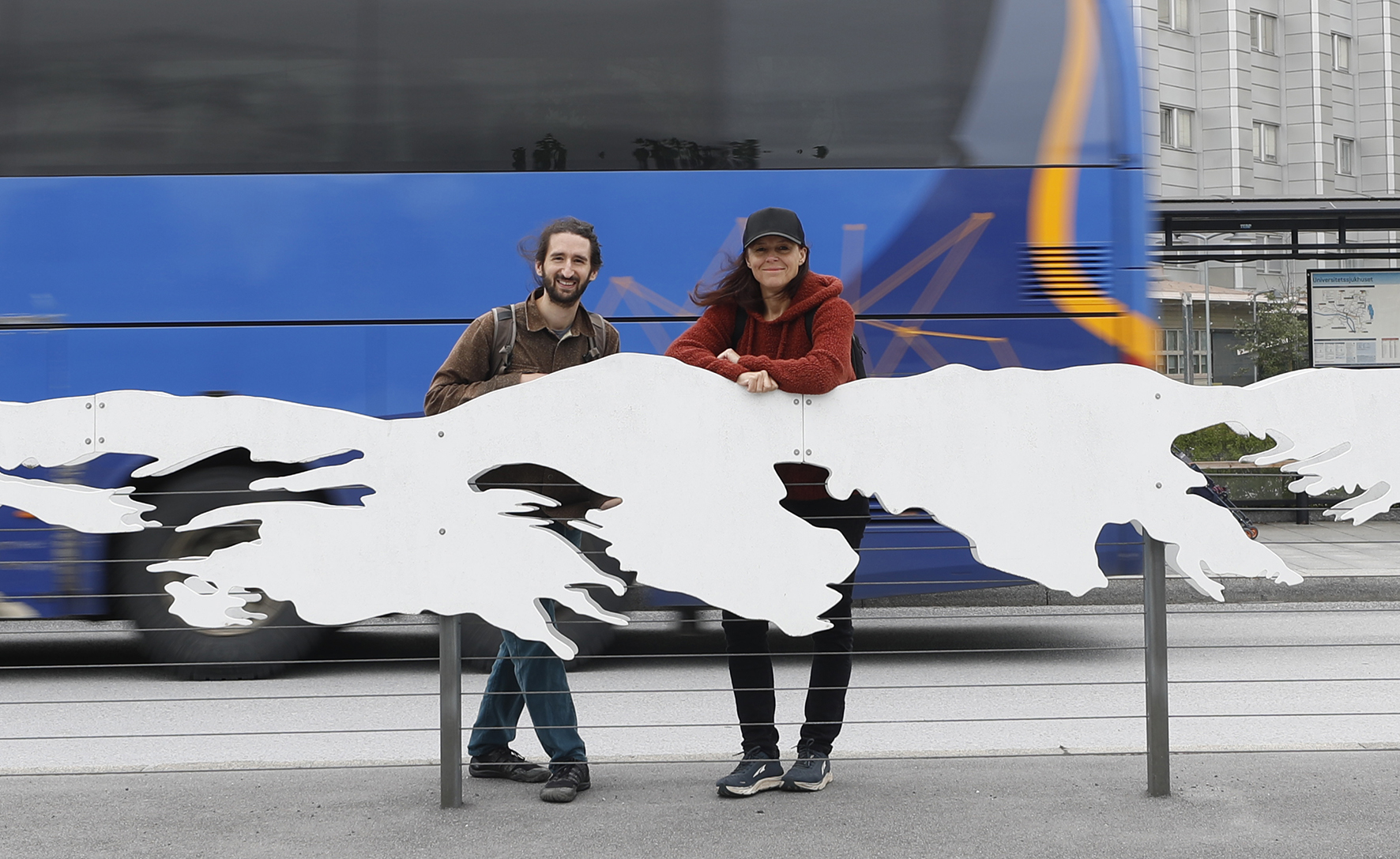
The sculptures
Aconcagua (South America)
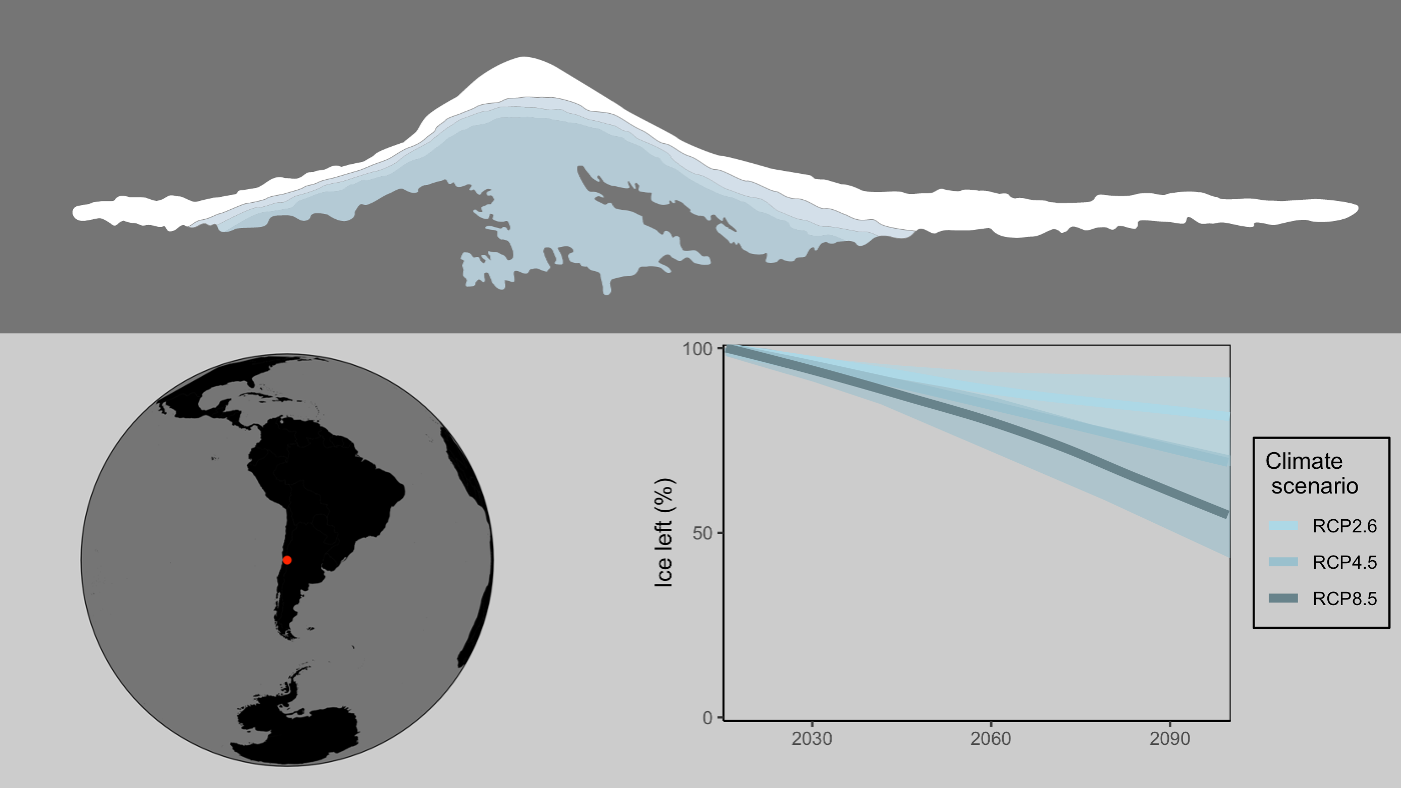
In the past 60 years, glaciers in the Andes have lost 46% of their extent
Under senaste 60 åren har glaciärer i Anderna förlorat 46% av sin uträtckning
Denali (North America)
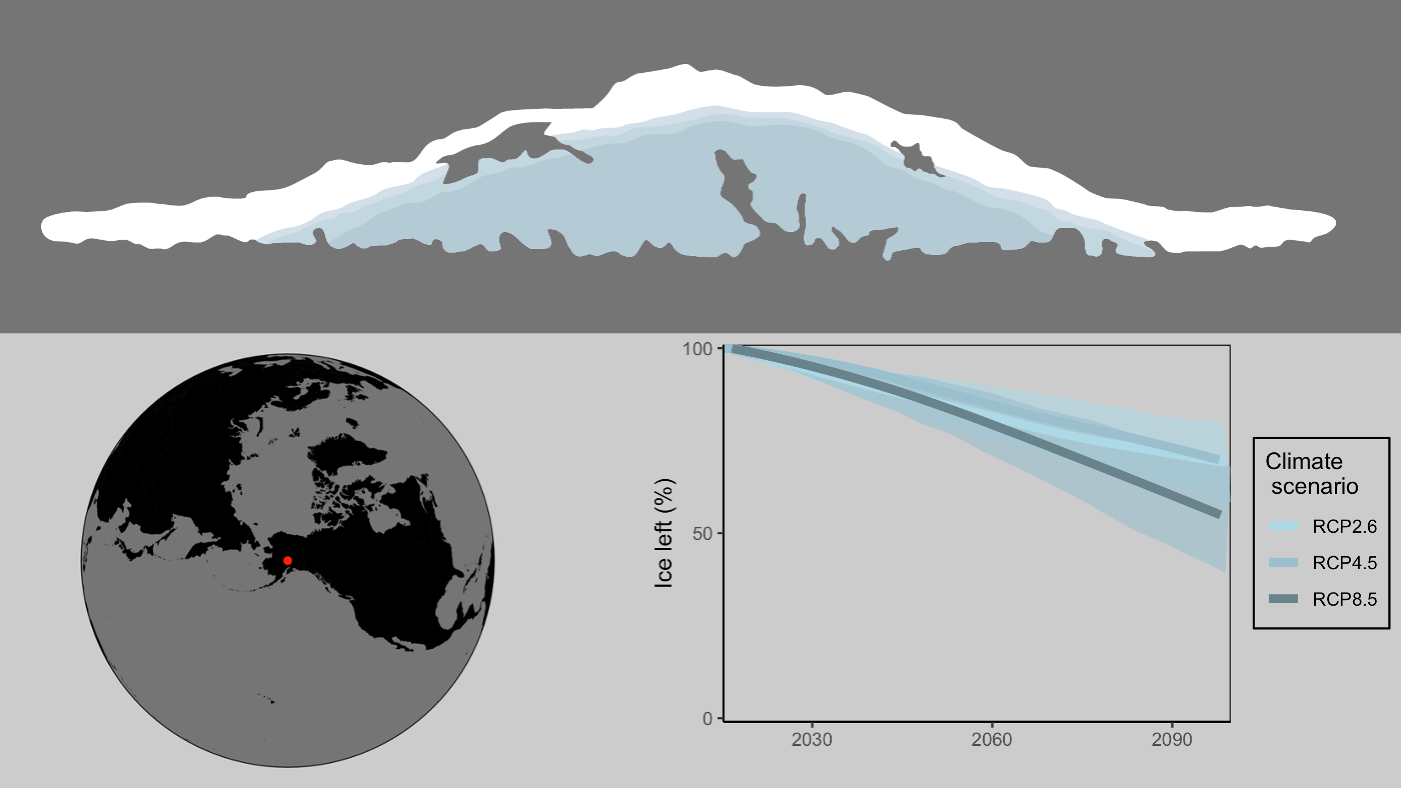
Glaciers at Denali are retreating at an average of 20 m every year
Glaciärerna på Denali drar sig tillbaka med genomsnitt 20 m varje är
Elbrus (Europe)
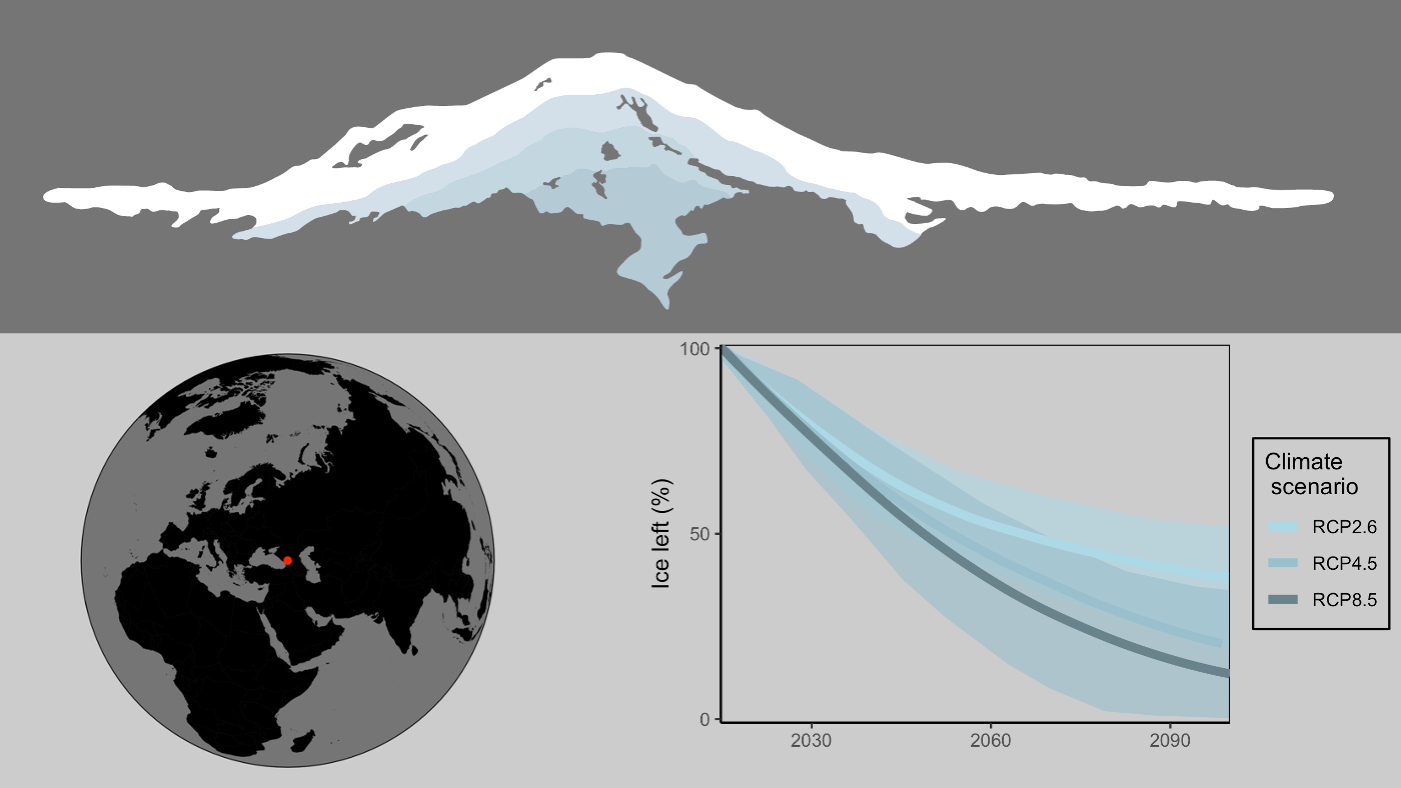
In 20 years, glaciers have lost more than 20% of the volume
::: ::: {.column width=“4%”}
På 20 år har glaciärer tappat mer än 20% av volymen
Everest (Asia)
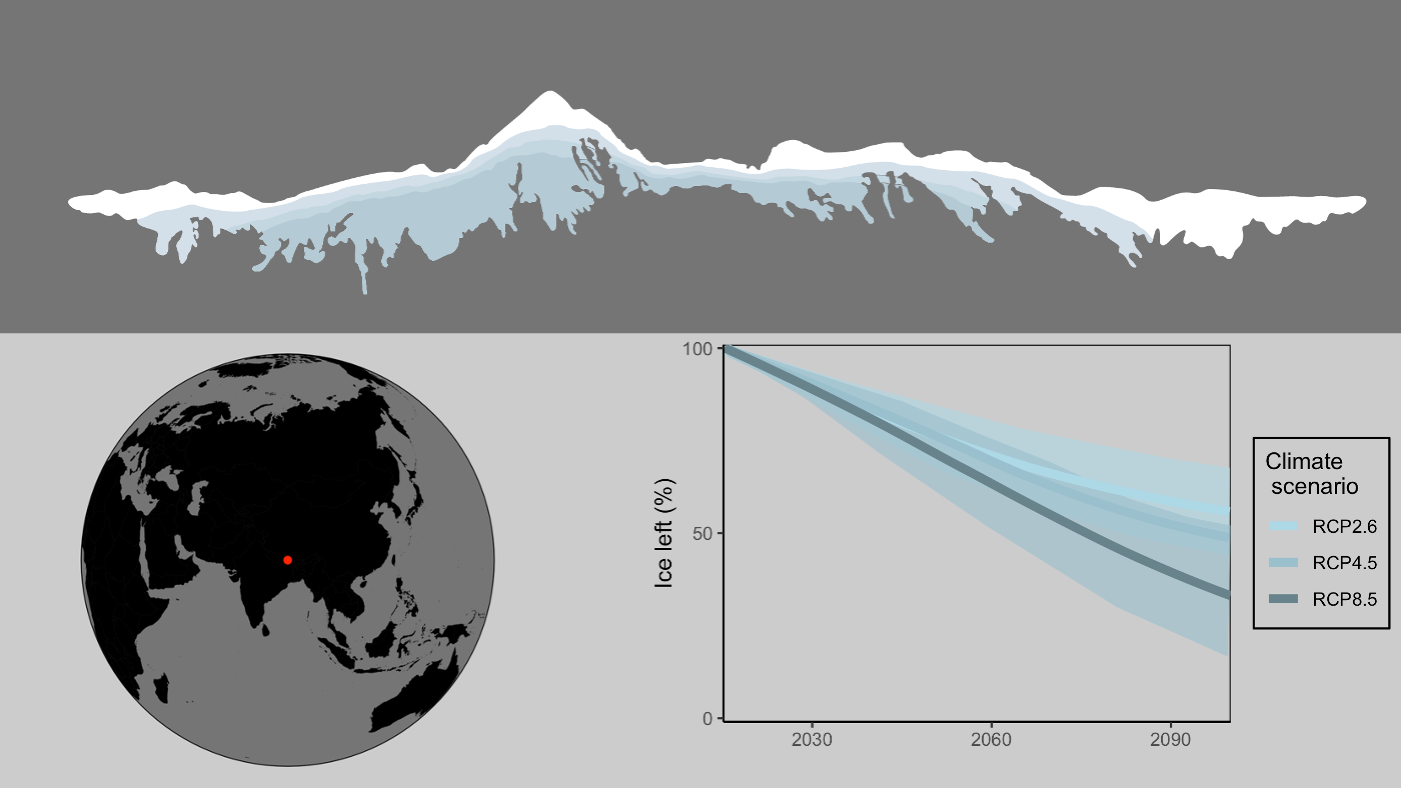
The glacier draining the highest peak in Earth has lost more than half its ice in the past three decades
Glaciären som dränerar högsta topp har förlorat mer än hälften av sin is under de senaste tre decennierna
Kebnekaise (Sweden)
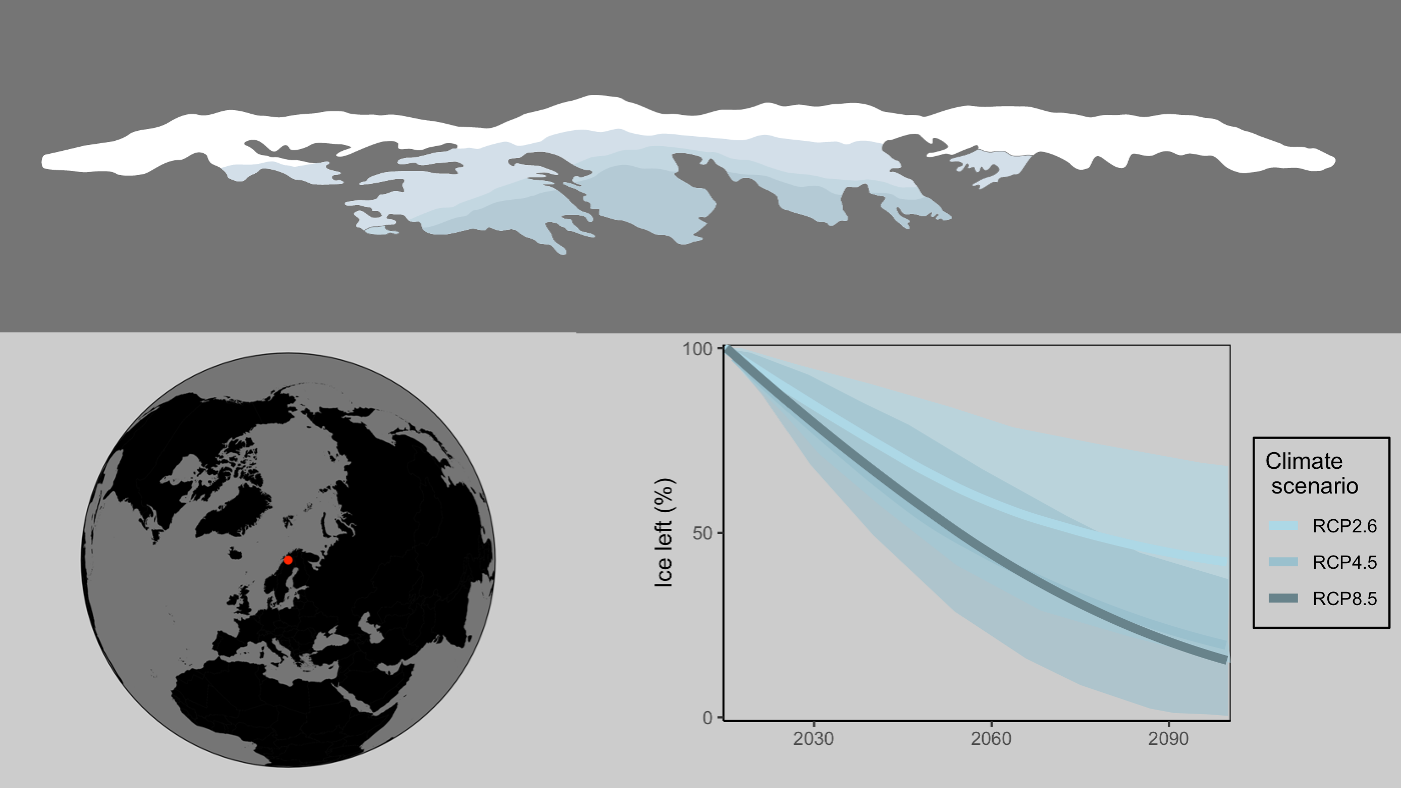
Sweden’s largest peak is more than 20 meters shorter than in 1990
Sveriges storsta topp är mer än 20 meter kortare än 1990
Kilimanjaro (Africa)
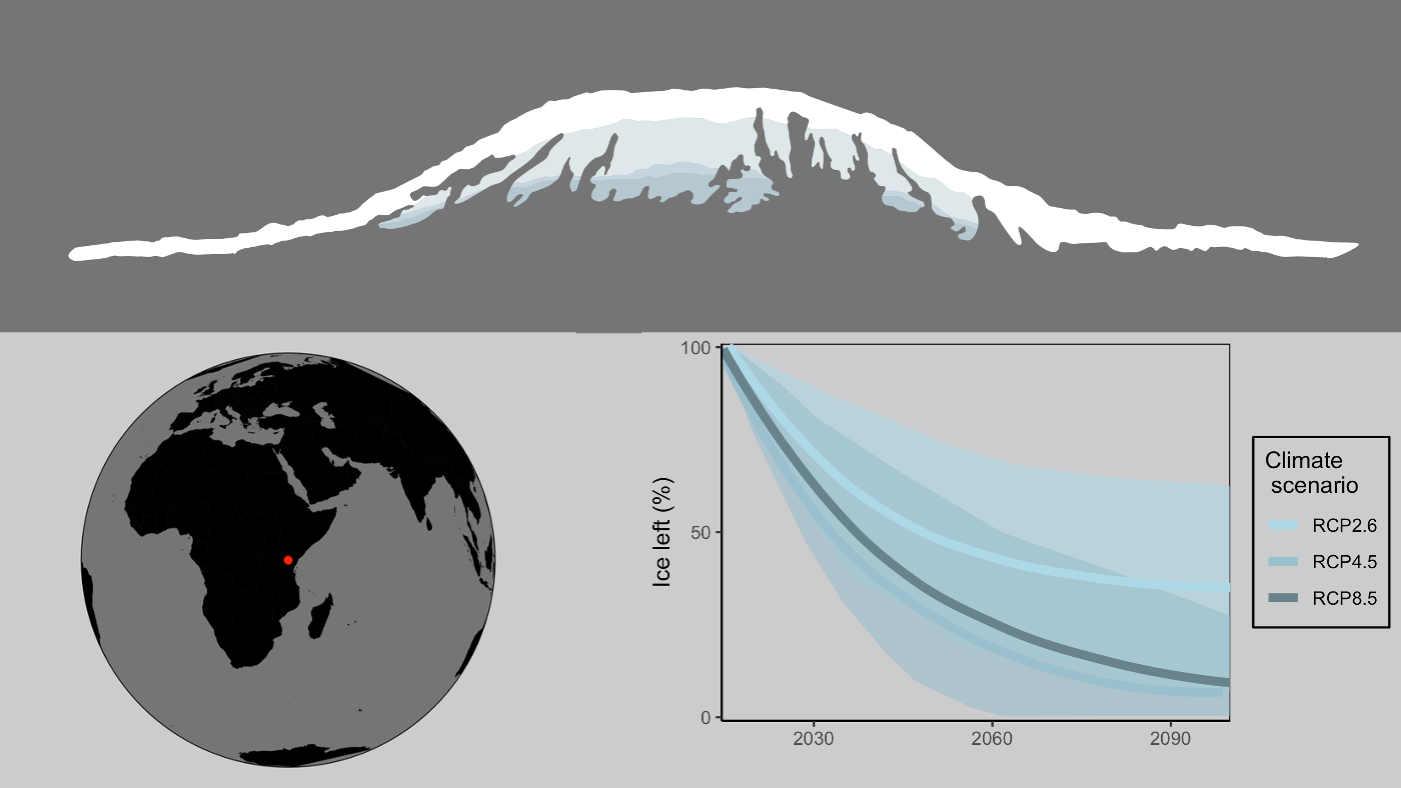
Puncak Jaya (Oceania)
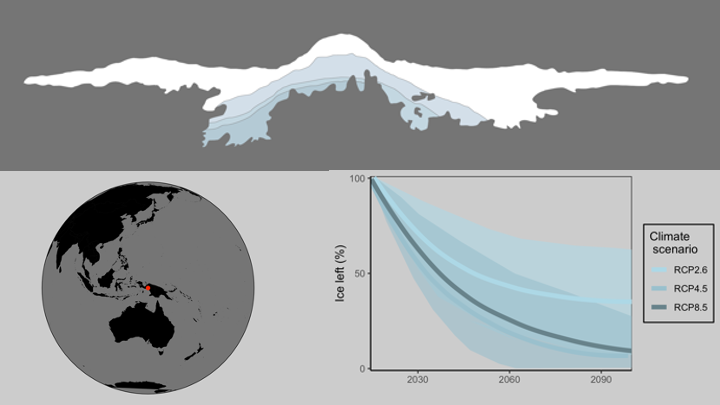
The glacier in Puncak Jaya will disappear by 2026
Glaciären i Puncak Jaya kommer at försvinna i 2026
Vinson Massif (Antartica)
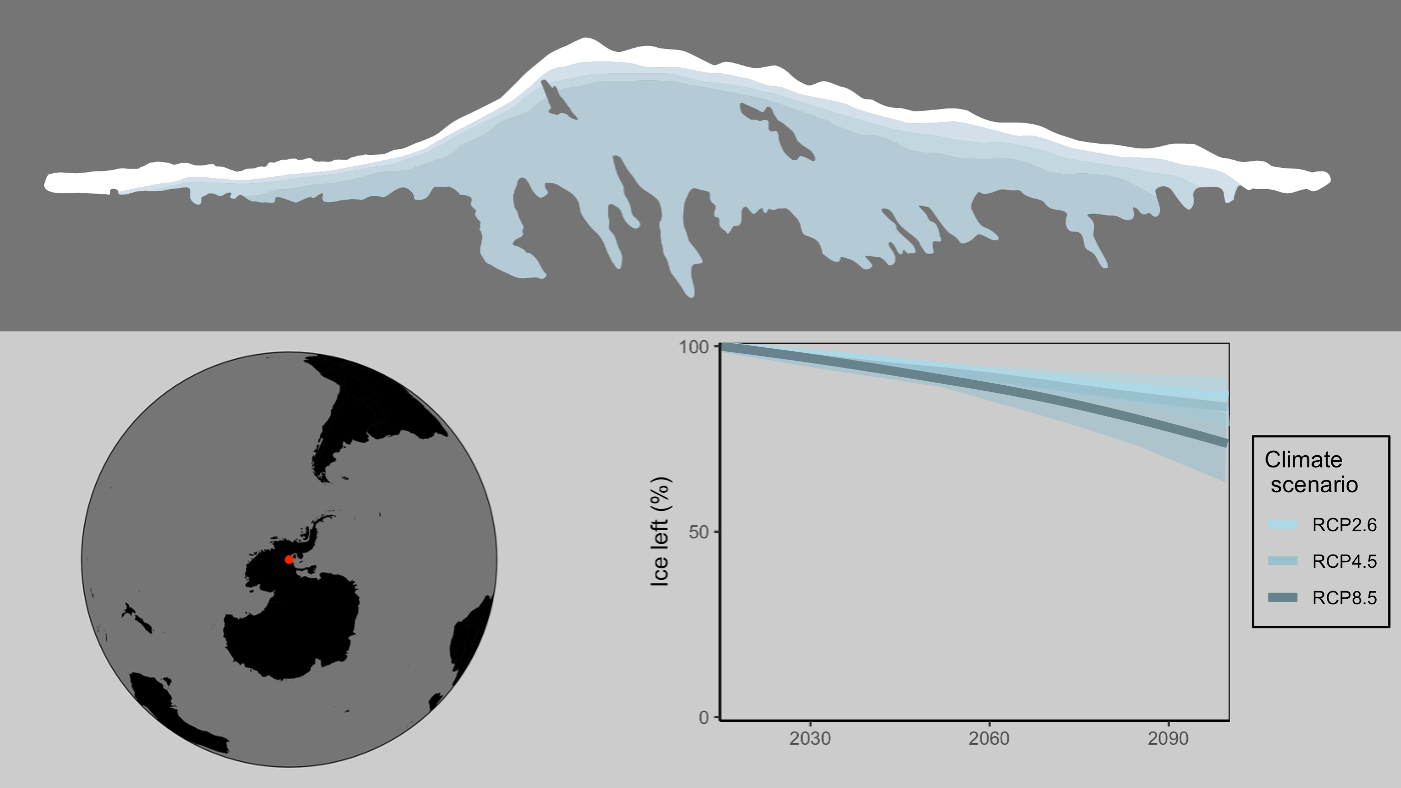
While glaciers in the highest peak of Antartica are stable, coastal glaciers are melting at the fastest rate in 5000 years and could raise the global seal level substantially this century
Medan glaciären på Anatarktis högsta topp är stabila, smälter kustglaciärerna i den snabbaste takten i 5000 år.
Scientific background
The sculptures reflect the snow and ice cover based from several pictures in each mountain, and thus are an abstraction of the specific mountain. It is hard to estimate the precise change of ice cover in each mountain, for this we used the modeled ice mass changes across larger regions. The output of those models is compiled in the Special report on the Ocean and Cryosphere in a changing climate by the IPCC, with the source of the graphs presented above corresponding to figure CB 6.1. Therefore, for each mountain, the coloured area represents the fraction of ice left in 2100 in three different emission scenarios, for the region where the mountain is located. For example, the data for Aconcagua corresponds to Southern Andes, and for Kebnekaise the expected glacier loss in Scandinavia.